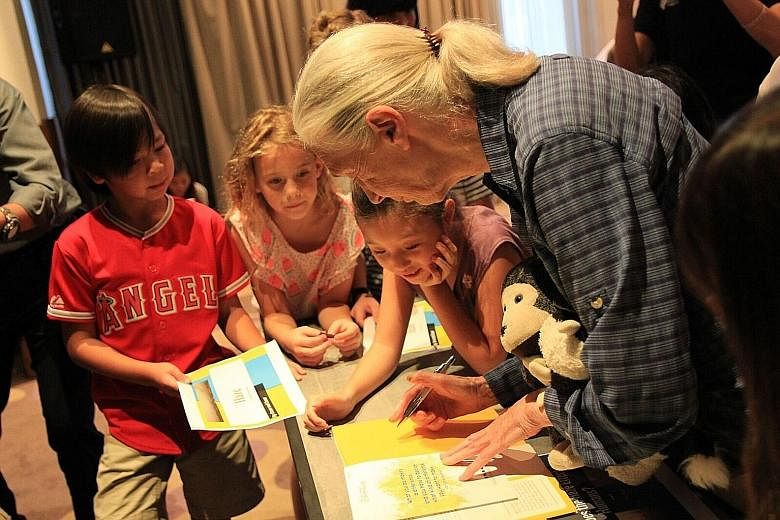Jane Goodall spent the first half of her life studying chimpanzees. But the latter half has seen her on a mission to save lives.
At 82, the world-renowned primatologist maintains an energetic demeanour. But then, she is no ordinary person - having established herself by proving that man was not the only species using tools.
Standing on a stage in Malaysia speaking for over an hour, Dr Goodall exuded a charismatic charm that was both inspirational and enlightening. "My main message is that every single one of us makes a difference… The indomitable human spirit is all around us," she told the audience during her youth-led community action programme over the weekend.
Wearing a blue checked shirt and khaki pants, with her hair tied up in her trademark ponytail, she was approachable and humble.
"I can't pretend to know exactly what's going on. All I know is that there are many people who care deeply about the wildlife in this country," she said, when asked what she thought of Malaysia's conservation work.
Born in 1934 in England, Dr Goodall grew up loving animals and had dreamt of an adventure in Africa. At 22, she left for Kenya on money saved from her part-time jobs. It was there that she first met the renowned paleontologist Louis Leakey, who became her mentor and got her a conservation gig at Gombe Stream National Park in Tanzania. The late Leakey trained two other scientists and gave the trio the nickname The Trimates - with Dr Goodall specialising in chimpanzees, Dian Fossey in gorillas and Birute Galdikas in orangutans.
Dr Goodall eventually became a scientist recognised in her own right. But in 1986, her path took a turn at a conference she attended - when scientists began to share about the destruction of forests and its impact on decimating wildlife and local villages.
"I was shocked... I went there as a scientist and left as an activist," she said.
She has shown no sign of slowing down since. She travels 300 days a year, spending time raising awareness about conservation.
Clutching two soft toys - a cow and a chimpanzee she calls Mr H - Dr Goodall repeatedly encouraged youths to harbour hope and take action, reminding that each individual has a choice to make a difference.
She had fans rushing for her autograph or a selfie in Malaysia, a stark contrast to her time spent alone in the African forests.
She believes her work is not done. "I can't solve all the problems. But by talking to people, there are more who want to help. I can't let them (youths) down," she said.

